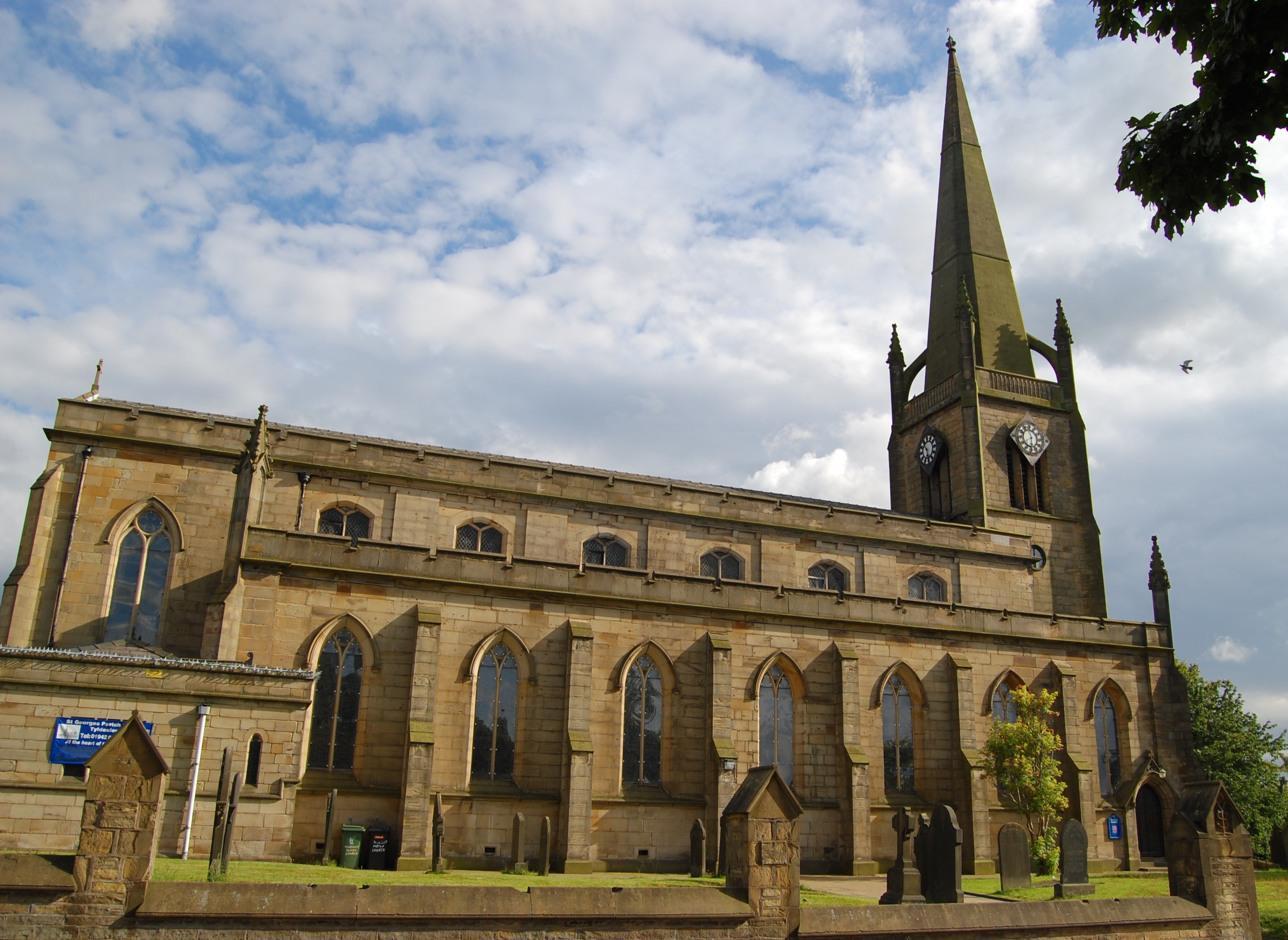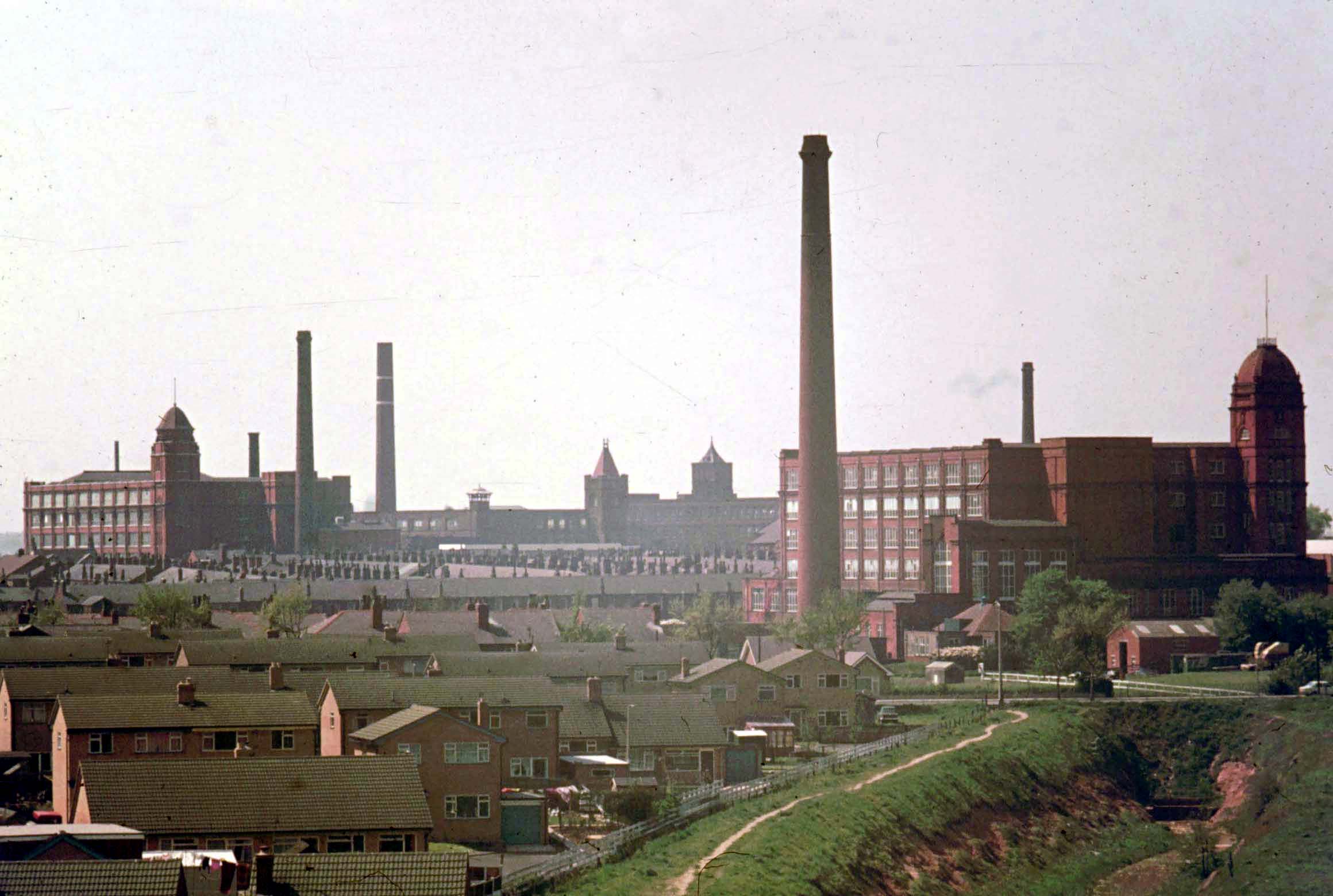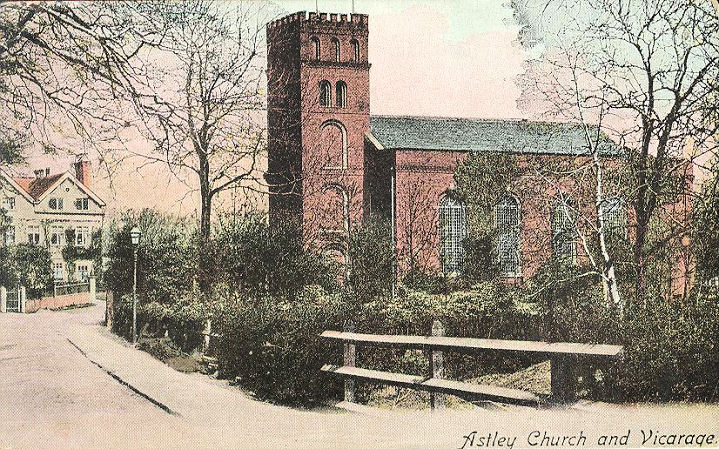St Stephen’s Church is a parish church in AstleyVillage in the Metropolitan Borough of Wigan, formerly a coal-mining area, but now part of a commuter belt for the nearby city of Manchester., Greater Manchester. It is an active Anglican church built in 1968 and part of Leigh deanery, the archdeaconry of Salford and diocese of Manchester. The church, together with St George’s Church, Tyldesley
 Waterloo church dedicated to St George, completed in 1825 to serve the growing township of Tyldesley cum Shakerley. and St John’s Church, Mosley Common
Waterloo church dedicated to St George, completed in 1825 to serve the growing township of Tyldesley cum Shakerley. and St John’s Church, Mosley CommonActive church in Mosley Common that was built in 1886. is part of the united beneficeOriginally used in feudal societies to describe a grant of land as a reward for services rendered. In modern usage it refers to a collection of parishes working together under a single incumbent. of Astley, Tyldesley and Mosley Common.[1][2][3]
Its origins are in Adam Mort’s Astley Chapel, a chapel of ease Church subordinate to a parish church serving an area known as a chapelry, for the convenience of those parishioners who would find it difficult to attend services at the parish church.
Church subordinate to a parish church serving an area known as a chapelry, for the convenience of those parishioners who would find it difficult to attend services at the parish church. Church subordinate to a parish church serving an area known as a chapelry, for the convenience of those parishioners who would find it difficult to attend services at the parish church. of Leigh Parish Church
Church subordinate to a parish church serving an area known as a chapelry, for the convenience of those parishioners who would find it difficult to attend services at the parish church. of Leigh Parish ChurchAncient parish church that served six townships. built in 1631. On 10 January 1843, the townshipDivision of an ecclesiastical parish that had civil functions. was made into a district chapelry
 Church subordinate to a parish church serving an area known as a chapelry, for the convenience of those parishioners who would find it difficult to attend services at the parish church.. The second chapel was burned in an arson attack in 1961, and the present church was built on Manchester Road.
Church subordinate to a parish church serving an area known as a chapelry, for the convenience of those parishioners who would find it difficult to attend services at the parish church.. The second chapel was burned in an arson attack in 1961, and the present church was built on Manchester Road.
History
The first chapel, built and paid for by Adam Mort, the wealthy owner of DamhouseGrade II* listed building in Tyldesley but considered to be in Astley, Greater Manchester, England. It has served as a manor house, sanatorium, and, since its restoration in 2000, houses offices, a clinic and tearooms. who died in early 1631, was consecrated on 3 August in the same year by the Bishop of Chester and dedicated to St Stephen, the first Christian martyr. It was the first chapel of ease
 Church subordinate to a parish church serving an area known as a chapelry, for the convenience of those parishioners who would find it difficult to attend services at the parish church.
Church subordinate to a parish church serving an area known as a chapelry, for the convenience of those parishioners who would find it difficult to attend services at the parish church. Church subordinate to a parish church serving an area known as a chapelry, for the convenience of those parishioners who would find it difficult to attend services at the parish church. of Leigh Parish Church. The chapel was built of local brick on part of the common. The Reverend Thomas Crompton, appointed by Thomas Mort, was the first minister in 1632.[4]
Church subordinate to a parish church serving an area known as a chapelry, for the convenience of those parishioners who would find it difficult to attend services at the parish church. of Leigh Parish Church. The chapel was built of local brick on part of the common. The Reverend Thomas Crompton, appointed by Thomas Mort, was the first minister in 1632.[4]
Mort’s chapel stood for nearly 130 years and was rebuilt after becoming dilapidated. The second, slightly larger chapel was built on the same site in 1760. Thomas Froggatt of Damhouse gave a contribution towards the cost of reconstruction. The chapel was built of handmade brick, 54 ft 6 in long and 36 ft wide, a nave Central part of a church, used by the laiety. with four side and two end windows and a small chancel
Central part of a church, used by the laiety. with four side and two end windows and a small chancel Part of a church containing the altar, used by the officiating clergy.. The embattled western tower contained a single bell. The chapel could hold 170 people. It was enlarged in 1834, 1842, and 1847.[1] Its tower was built in 1842.[5]
Part of a church containing the altar, used by the officiating clergy.. The embattled western tower contained a single bell. The chapel could hold 170 people. It was enlarged in 1834, 1842, and 1847.[1] Its tower was built in 1842.[5]
The second chapel was destroyed by fire on 18 June 1961.[6] It was decided not to rebuild it but relocate to a site on Manchester Road. The third St Stephen’s Church was consecrated on 26 October 1968.
Clergy
Thomas Crompton, the first minister, appointed in 1632 and the son of William Crompton of Bedford Suburb of Leigh in Greater Manchester, one of the three ancient townships that merged in 1875 to form the town of Leigh. in Leigh, was ejected for nonconformity. The second minister, John Battersby, was from Shakerley
Suburb of Leigh in Greater Manchester, one of the three ancient townships that merged in 1875 to form the town of Leigh. in Leigh, was ejected for nonconformity. The second minister, John Battersby, was from Shakerley Suburb of Tyldesley in Greater Manchester, anciently a hamlet in the northwest of the township.; both had been educated at Brasenose College, Oxford.[7]
Suburb of Tyldesley in Greater Manchester, anciently a hamlet in the northwest of the township.; both had been educated at Brasenose College, Oxford.[7]


